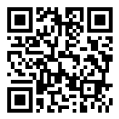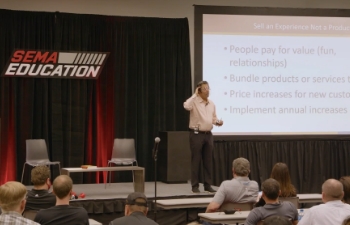RETAIL BEST PRACTICES
Federal Aid for Businesses in 2021
How the Latest Economic Stimulus Package Can Help Your Company
By Douglas McColloch

still allows credits up to $9,600 per employee to companies that hire
candidates who are veterans, welfare recipients or long-term
unemployed. Shutterstock.com
Last December, Congress passed, and former President Trump signed into law, a bill providing an additional $900 billion in federal stimulus spending in response to the ongoing COVID-19 pandemic and the prospect of a post-holiday economic slowdown. The legislation approves direct payments to individuals of up to $600 and provides a $300 weekly extension of unemployment assistance, some $285 billion in loans under the Paycheck Protection Program (PPP), $25 billion in rent relief, and more than $80 billion to aid schools and colleges.
While some elements of the legislation are continuations of programs enacted under the CARES Act that passed earlier in the year, some beneficial modifications have been made to existing programs, and some new federal initiatives promise additional aid to businesses—and small businesses in particular.
Recently, SEMA Education hosted a virtual webinar, “Everything You Need to Know About the New PPP Program,” in which changes to the program were discussed in detail. In this article, we’ll review highlights of the presentation and shine a light on elements of the new legislation that can benefit SEMA-member companies.

safety expenses that were undertaken to comply with government
health guidance are now forgivable PPP loan expenses, retroactive to
March 2020. Shutterstock.com
PPP: What’s New
Administered by the U.S. Small Business Administration (SBA), the revised PPP provides $285 billion in loans via SBA-approved lenders (including online sources such as Square and PayPal) for small- to medium-size companies. Among the features of the revised program:
- First and Second Loans: The PPP program has reopened, and applicants may again seek a potentially forgivable first loan. If first loan funds have already been granted and spent, a qualified applicant may request a forgivable second loan. Companies that did not receive the full amount for which they were eligible under the first loan may now request an increase. (Such increase remains part of the original PPP loan and is not a second loan.)
- Covered Period: Funds for potentially forgivable expenses must be spent during the covered period. Borrowers can set the covered period of the loan to be between eight and 24 weeks after the loan disbursement date.
- Loan Period: The covered period for all PPP loans is now March 31, 2021.
- Application Deadline: Applications for first or second loans must be submitted by March 31, 2021 (unless the program is extended).
- Defining Small Business: For first loans, the definition of “small business” is generally 500 employees, but the definition for motor-vehicle parts manufacturers ranges from 1,000–1,500 employees. For a second loan, the business size is limited to 300 employees or fewer, and companies must show a 25% revenue reduction during any quarter of 2020 relative to the same quarter of 2019.
- Loan Amount: PPP loans equal the average of one month’s payroll multiplied by 2.5. Payroll costs include compensation along with other payroll-related costs such as retirement payments, state and local taxes on payroll, payment for vacation or paid leave, group healthcare costs, and allowances for separation or dismissal. The maximum amount for a first loan is $10 million. The maximum amount for a second loan is $2 million (and $10 million for a combined first and second loan).
- Use of Funds: PPP funds can be used to cover payroll, mortgage interest, rent, utilities, expenditures related to software and cloud computing services, certain property damage costs, certain supplier costs, and certain worker protection expenditures. At least 60% of loan proceeds must be used on payroll costs (i.e., wages, payroll taxes, paid leave, healthcare payments, retirement plan contributions, and group life, disability, dental and vision insurance). Reimbursable compensation in the form of salaries, wages, commissions or similar payments is capped at $100,000 per employee.
- Interest Rate and Repayment Terms: The loan interest rate is 1% for five years. Repayments on any amount not forgiven are deferred at least 10 months after the end of the covered period. No collateral or personal guarantees are required, and there are no borrower and lender fees.
- Taxable Income: Forgiveness of PPP loans is not to be included as taxable income (federal), but check how your state will treat the loan.
- Tax-Deductible PPP Expenses: PPP loan proceeds are tax deductible as business expenses (federal), but check how your state will treat the expenses.
- Retaining/Rehiring Workers: Borrowers must attempt to keep the same number of employees to the extent possible. A reduction in over 25% of salaries will result in a commensurate reduction in overall loan forgiveness, but if the reduction is less than 25% of salaries, there will be no reduction in loan forgiveness. If a borrower cannot find employees to rehire, or if the entity is shut down due to COVID 19, the borrower will have a “safe harbor” and will not be penalized for a reduction in head count of greater than 25%.
- Amount Forgiven: The SBA will forgive up to 100% of the loan principal if the funds have been used appropriately (for payroll, rent, utilities, etc.).
- Streamlined Loan Forgiveness Application: The SBA now has a simple one-page form to seek forgiveness of a loan of $150,000 that does not require any submission of documentation. The borrower must simply certify to the following: the number of employees the borrower was able to retain because of the loan; the estimated total amount of the loan spent on payroll costs; and the total loan amount. The borrower must attest that the loan was spent on eligible expenses and that the borrower will retain records that prove compliance with PPP requirements. Employment records must be retained for four years, and other records must be retained for three years. (The borrower remains subject to an audit.)
- Economic Injury: To qualify for a PPP loan, the borrower must certify that the company has economic need (the “Necessity” test). The SBA provides this guidance: “Borrowers...must certify in good faith that current economic uncertainty makes the loan request necessary to support the ongoing operations of the Applicant...taking into account their ability to access other sources of liquidity sufficient to support their ongoing operations in a manner that is not significantly detrimental to the business.”
- Payroll Taxes: Businesses receiving a PPP loan may also defer payment of 2020 payroll taxes.
- Receiving PPP Funds: Once a borrower receives a Preferred Lender Program (PLP) number for its loan, the SBA approves the loan and funds are reserved for the borrower. Starting on the date a borrower receives a PLP number, the lender has 10 calendar days to disburse funds. The loan must be disbursed in full, and the 24-week loan forgiveness period begins the day funds are disbursed.
- Apply Now: Loan applications for the new PPP program are now being accepted through SBA-approved lenders (banks and community financial institutions). For more information, visit www.sba.gov.
PPP Low- to Moderate-Income (LMI) Area Program
The PPP program under the initial CARES Act came in for a fair amount of criticism because it ended up disbursing money to companies that were not in dire financial straits, so the new program includes a new initiative designed to target PPP relief for businesses located in low- to moderate-income (LMI) areas, which is defined in the legislation as either:
- A census tract in the most recently completed decennial census published by the U.S. Census Bureau that has a poverty rate of at least 20%.
- A census tract in which median family income does not exceed 50 to 80% of statewide or metropolitan median family income, whichever is greater.
The legislation sets aside $15 billion for initial PPP loans, $25 billion for second loans, $15 billion for smaller community banks and credit unions, and $15 billion for mission-based community lenders such as community development financial institutions and minority depository institutions. For borrowers with fewer than 10 employees in low- to moderate-income areas, loans of up to $250,000 are available immediately.
Economic Injury Disaster Loan Program
The Economic Injury Disaster Loan (EIDL) program, first rolled out with the CARES Act, returns in the new legislation. It’s distinguished from the other loan programs because the SBA is both the administrator and the lender; prospective borrowers need simply log onto www.sba.gov to begin the loan application process. Loans are available up to $2 million with a 30-year maturity at 3.75% interest for for-profit companies. Companies may apply for a loan until December 31, 2021.
As written, the law reserves the loans for companies that are located in a designated “disaster area,” but because of COVID, any company located in the entire U.S. currently qualifies under the program. Unlike the PPP program, these loans are not forgivable but instead present a cost-efficient long-term option for companies in need of additional funding. Companies currently receiving PPP loans can apply for EIDL assistance as well.
The SBA previously provided a loan advance of up to $10,000, which automatically became a forgivable grant. EIDL advances are no longer available at this time.

for additional relief under the new legislation, with loans up to
$250,000 available immediately for companies with 10 or fewer
employees in those areas. Shutterstock.com
Other SBA Loan Programs and Chances for Forgiveness
Also under the new legislation, additional SBA-administered loans are available for companies that were largely spared during the pandemic. SBA Section 7(a) and 504 loans are available for companies with up to 500 employees. Both Section 7(a) and 504 loans are available up to $5 million; SBA microloans of $50,000 are also available. These loans can be used for working capital, inventory, equipment, inventory or business acquisition. To encourage lending, banks have been incentivized with 90% federal loan guarantees (up from 75% previously), and all federal guarantee fees have been waived.
Companies with an existing SBA loan can now receive immediate three-month loan forgiveness, with an additional five months available if the company can prove that it is in a hard-hit industry such as hospitality or food service. Also, companies applying for a new SBA loan from now until September 20, 2021, can, if accepted, receive six months’ forgiveness of principal and interest, with amounts capped at $9,000 per month. These new forgiveness programs are not contingent on COVID or financial distress; they’re available for any company that qualifies for a loan.
Employee Retention Tax Credit
First launched under the CARES Act, this refundable federal tax credit has been made more generous for 2020. Companies with up to 500 employees can qualify (up from 100 previously) if they can show in their quarterly tax filings either:
- That their businesses were partially or completely shut down during that quarter.
- They are reporting revenue losses of 20% or greater versus the same quarter in 2019. (Under the old law, companies had to show a 50% loss.)
Beginning January 1, 2021, the tax credit is 70% of qualified wages plus the cost to continue providing health benefits to the employee. As of January 1, 2021, allowable credits can be taken up to $7,000 per employee per quarter ($5,000 previously) and are retroactive to 2020. Companies making the credit can still qualify for a PPP loan (they couldn’t previously), and employer group health insurance is now included in the revenue calculations. Qualified wages are those paid after March 12, 2020, and before July 1, 2021. The credit is refundable if the tax credit exceeds the payroll taxes due for that quarter.
Other Tax Policy Updates
Whether or not your company has been affected by COVID-19, the FICA/social-security tax deferral first permitted under the CARES Act has been extended to cover the first quarter of 2021. The money will need to be repaid, interest-free—50% by the end of 2021 and the other 50% in 2022—but it’s an attractive option for companies still suffering from negative cash flow.
Tax credits under the Families First Coronavirus Response Act are still available under the new legislation, but participation is now voluntary. Under the CARES Act, employers had to keep their employees on the payroll through the end of the year to qualify for PPP assistance. Now employers who opt not to maintain a full payroll can still qualify for PPP loans, but companies that do can still qualify for tax credits through the first quarter of 2021.
The Work Opportunity Tax Credit has been extended through 2025. The credit provides $1,200–$9,600 per employee to companies who hire candidates this year who meet one of the following criteria:
- Are long-term unemployed (six months or longer).
- Are veterans.
- Are welfare recipients.
- Have successfully completed a rehab program.
Finally, tax deductions for charitable giving expenses have been made more generous for individuals and businesses for 2021. Companies can now deduct up to 25% of taxable income for charitable contributions (10% formerly), and deduction for food donations will remain at 25% of taxable income instead of reverting to 15% (the rate before the CARES Act was enacted).
 View the Presentation
View the Presentation
Accessing SEMA’s industry-leading education is easier than ever. With dozens of live and on-demand offerings, and more debuting during the year, SEMA Virtual Education includes comprehensive presentations, insightful discussions, and short videos that teach, inform, inspire and entertain automotive specialty-equipment professionals. From builders and engineers, to marketers and sales staff and much more, participants will become more educated and prepared for success through SEMA’s Virtual Education. Visit www.sema.org/virtual-education to learn more.








